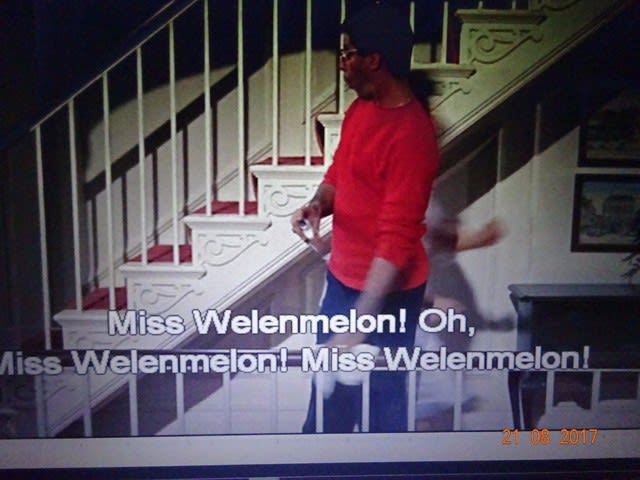その7 OldCamera メモリー交換のみ
NewとOldで差が出るでしょうか??
ホントは日曜日に行く予定だった歯科医院
立派な建物です。


カメラとメモリーを購入した店


そして写真の比較のための写真


その6 NewCamera
夕食に出かけて途中雨宿り
そしてうどんはやめて鮭づくし 美味しいです。






ジェリールイス逝去の報にDVDで彼の作品鑑賞
OldCameraの不良原因がメモリーと推測
NewCamera購入の店でメモリー購入 21万ドン
古いカメラも撮れる様になりました。













その5 91歳で逝去 ジェリールイス
彼をしのんでDVDで彼の作品鑑賞でした。
我が人生をにおいて米国留学とか楽天的生き方を教示してくれたのは彼の映画でした。
ニューヨークタイムズに彼の作品シェアがあり
我がフェイスブックにも!!
Jerry Lewis, Mercurial Comedian and Filmmaker, Dies at 91
Jerry Lewis wrote, produced and directed many of his own films. Credit John Springer Collection/Corbis, via Getty Images
Jerry Lewis, the comedian and filmmaker who was adored by many, disdained by others, but unquestionably a defining figure of American entertainment in the 20th century, died on Sunday morning at his home in Las Vegas. He was 91.
His death was confirmed by his publicist, Candi Cazau.
Mr. Lewis knew success in movies, on television, in nightclubs, on the Broadway stage and in the university lecture hall. His career had its ups and downs, but when it was at its zenith there were few stars any bigger. And he got there remarkably quickly.
Barely out of his teens, he shot to fame shortly after World War II with a nightclub act in which the rakish, imperturbable Dean Martin crooned and the skinny, hyperactive Mr. Lewis capered around the stage, a dangerously volatile id to Mr. Martin’s supremely relaxed ego.
After his break with Mr. Martin in 1956, Mr. Lewis went on to a successful solo career, eventually writing, producing and directing many of his own films.
Continue reading the main story
RECENT COMMENTS
ellen 13 minutes ago
Jerry darling! how dare you! YOU were supposed to live forever. Thank you for the fun, the lifetime of laughs, the sheer joy you gave the...
ellen 13 minutes ago
How did the Kennedy Center Honors program overlook him and Mickey Rooney?
First Last 13 minutes ago
I applaud his perseverance and success. But, for me, I could not stand his or The Stooges shtick. Even now, while viewing the trailers, to...
SEE ALL COMMENTS WRITE A COMMENT
As a spokesman for the Muscular Dystrophy Association, Mr. Lewis raised vast sums for charity; as a filmmaker of great personal force and technical skill, he made many contributions to the industry, including the invention in 1960 of a device — the video assist, which allowed directors to review their work immediately on the set — still in common use.
A mercurial personality who could flip from naked neediness to towering rage, Mr. Lewis seemed to contain multitudes, and he explored all of them. His ultimate object of contemplation was his own contradictory self, and he turned his obsession with fragmentation, discontinuity and the limits of language into a spectacle that enchanted children, disturbed adults and fascinated postmodernist critics.
Jerry Lewis was born on March 16, 1926, in Newark. Most sources, including his 1982 autobiography, “Jerry Lewis: In Person,” give his birth name as Joseph Levitch. But Shawn Levy, author of the exhaustive 1996 biography “King of Comedy: The Life and Art of Jerry Lewis,” unearthed a birth record that gave his first name as Jerome.
Slide Show
SLIDE SHOW
Jerry Lewis | 1926-2017
CreditPhilippe Halsman/Magnum Photos
His parents, Danny and Rae Levitch, were entertainers — his father a song-and-dance man, his mother a pianist — who used the name Lewis when they appeared in small-time vaudeville and at Catskills resort hotels. The Levitches were frequently on the road and often left Joey, as he was called, in the care of Rae’s mother and her sisters. The experience of being passed from home to home left Mr. Lewis with an enduring sense of insecurity and, as he observed, a desperate need for attention and affection.
An often bored student at Union Avenue School in Irvington, N.J., he began organizing amateur shows with and for his classmates, while yearning to join his parents on tour. During the winter of 1938-39, his father landed an extended engagement at the Hotel Arthur in Lakewood, N.J., and Joey was allowed to go along. Working with the daughter of the hotel’s owners, he created a comedy act in which they lip-synced to popular recordings.
By his 16th birthday, Joey had dropped out of Irvington High and was aggressively looking for work, having adopted the professional name Jerry Lewis to avoid confusion with the nightclub comic Joe E. Lewis. He performed his “record act” solo between features at movie theaters in northern New Jersey, and soon moved on to burlesque and vaudeville.
In 1944 — a 4F classification kept him out of the war — he was performing at the Downtown Theater in Detroit when he met Patti Palmer, a 23-year-old singer. Three months later they were married, and on July 31, 1945, while Patti was living with Jerry’s parents in Newark and he was performing at a Baltimore nightclub, she gave birth to the first of the couple’s six sons, Gary, who in the 1960s had a series of hit records with his band Gary Lewis and the Playboys. The couple divorced in 1980.
Between his first date with Ms. Palmer and the birth of his first son, Mr. Lewis had met Dean Martin, a promising young crooner from Steubenville, Ohio. Appearing on the same bill at the Glass Hat nightclub in Manhattan, the skinny kid from New Jersey was dazzled by the sleepy-eyed singer, who seemed to be everything he was not: handsome, self-assured and deeply, unshakably cool.
When they found themselves on the same bill again at another Manhattan nightclub, the Havana-Madrid, in March 1946, they started fooling around in impromptu sessions after the evening’s last show. Their antics earned the notice of Billboard magazine, whose reviewer wrote, “Martin and Lewis do an afterpiece that has all the makings of a sock act,” using showbiz slang for a successful show.
Mr. Lewis must have remembered those words when he was booked that summer at the 500 Club in Atlantic City. When the singer on the program dropped out, he pushed the club’s owner to hire Mr. Martin to fill the spot. Mr. Lewis and Mr. Martin cobbled together a routine based on their after-hours high jinks at the Havana-Madrid, with Mr. Lewis as a bumbling busboy who kept breaking in on Mr. Martin — dropping trays, hurling food, cavorting like a monkey — without ever ruffling the singer’s sang-froid.
The act was a success. Before the week’s end, they were drawing crowds and winning mentions from Broadway columnists. That September, they returned to the Havana-Madrid in triumph.
Bookings at bigger and better clubs in New York and Chicago followed, and by the summer of 1948 they had reached the pinnacle, headlining at the Copacabana on the Upper East Side of Manhattan while playing one show a night at the 6,000-seat Roxy Theater in Times Square.
The phenomenal rise of Martin and Lewis was like nothing show business had seen before. Partly this was because of the rise of mass media after the war, when newspapers, radio and the emerging medium of television came together to create a new kind of instant celebrity. And partly it was because four years of war and its difficult aftermath were finally lifting, allowing America to indulge a long-suppressed taste for silliness. But primarily it was the unusual chemical reaction that occurred when Martin and Lewis were side by side.
Mr. Lewis’s shorthand definition for their relationship was “sex and slapstick.” But much more was going on: a dialectic between adult and infant, assurance and anxiety, bitter experience and wide-eyed innocence that generated a powerful image of postwar America, a gangly young country suddenly dominant on the world stage.
Among the audience members at the Copacabana was the producer Hal Wallis, who had a distribution deal through Paramount Pictures. Other studios were interested — more so after Martin and Lewis began appearing on live television — but it was Mr. Wallis who signed them to a five-year contract.
He started them off slowly, slipping them into a low-budget project already in the pipeline. Based on a popular radio show, “My Friend Irma” (1949) starred Marie Wilson as a ditsy blonde and Diana Lynn as her levelheaded roommate, with Martin and Lewis providing comic support. The film did well enough to generate a sequel, “My Friend Irma Goes West” (1950), but it was not until “At War With the Army” (1951), an independent production filmed outside Mr. Wallis’s control, that the team took center stage.
10 Great Jerry Lewis Movies to Stream
This group of films demonstrates the breadth of Lewis’s talent as an actor, comedian and director.
NYTIMES.COM
4回目の休憩
午後8時42分
この下のクリックお願いします!!!
↓↓↓↓↓



















※コメント投稿者のブログIDはブログ作成者のみに通知されます